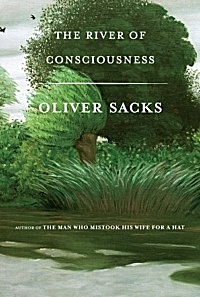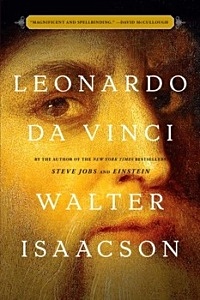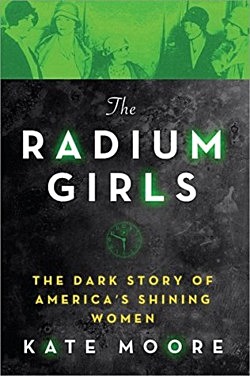Fleurs du Mal Magazine


Or see the index

The Bat
I
Thou dread, uncanny thing,
With fuzzy breast and leathern wing,
In mad, zigzagging flight,
Notching the dusk, and buffeting
The black cheeks of the night,
With grim delight!
II
What witch’s hand unhasps
Thy keen claw-cornered wings
From under the barn roof, and flings
Thee forth, with chattering gasps,
To scud the air,
And nip the ladybug, and tear
Her children’s hearts out unaware?
III
The glowworm’s glimmer, and the bright,
Sad pulsings of the firefly’s light,
Are banquet lights to thee.
O less than bird, and worse than beast,
Thou Devil’s self, or brat, at least,
Grate not thy teeth at me!
James Whitcomb Riley
(1849-1916)
The Bat
fleursdumal.nl magazine
More in: Archive Q-R, Archive Q-R, CLASSIC POETRY, Natural history
From the best-selling author of Gratitude, On the Move, and Musicophilia, a collection of essays that displays Oliver Sacks’s passionate engagement with the most compelling and seminal ideas of human endeavor: evolution, creativity, memory, time, consciousness, and experience.
 Oliver Sacks, a scientist and a storyteller, is beloved by readers for the extraordinary neurological case histories (Awakenings, An Anthropologist on Mars) in which he introduced and explored many now familiar disorders–autism, Tourette’s syndrome, face blindness, savant syndrome.
Oliver Sacks, a scientist and a storyteller, is beloved by readers for the extraordinary neurological case histories (Awakenings, An Anthropologist on Mars) in which he introduced and explored many now familiar disorders–autism, Tourette’s syndrome, face blindness, savant syndrome.
He was also a memoirist who wrote with honesty and humor about the remarkable and strange encounters and experiences that shaped him (Uncle Tungsten, On the Move, Gratitude).
Sacks, an Oxford-educated polymath, had a deep familiarity not only with literature and medicine but with botany, animal anatomy, chemistry, the history of science, philosophy, and psychology.
The River of Consciousness is one of two books Sacks was working on up to his death, and it reveals his ability to make unexpected connections, his sheer joy in knowledge, and his unceasing, timeless project to understand what makes us human.
Oliver Sacks was born in 1933 in London and was educated at Queen’s College, Oxford. He completed his medical training at San Francisco’s Mount Zion Hospital and at UCLA before moving to New York.
Familiar to the readers of The New Yorker and The New York Review of Books, Dr. Sacks spent more than fifty years working as a neurologist and wrote many books, including The Man Who Mistook His Wife for a Hat, Musicophilia, and Hallucinations, about the strange neurological predicaments and conditions of his patients.
The New York Times referred to him as “the poet laureate of medicine,” and over the years he received many awards, including honors from the Guggenheim Foundation, the National Science Foundation, the American Academy of Arts and Letters, The American Academy of Arts and Sciences, and the Royal College of Physicians. His memoir On the Move was published shortly before his death in August 2015.
The River of Consciousness
By Oliver Sacks
Hardcover
Oct 24, 2017
256 Pages
$27.00
Published by Knopf
5-1/2 x 8-3/8
ISBN 9780385352567
new books
fleursdumal.nl magazine
More in: - Book News, - Book Stories, Archive S-T, Art & Literature News, AUDIO, CINEMA, RADIO & TV, DRUGS & DISEASE & MEDICINE & LITERATURE, Natural history, Oliver Sacks, Psychiatric hospitals

Joachim Ringelnatz
Aus der Vogelkunde
Ich spreche von Flugmaschinen.
Sie summen lauter als Bienen
Und sind eine Kreuzung von Taube,
Ente, Maikäfer und Schiffsschraube.
Sie nisten einzeln, paar- und gruppen-
Weise in Hallen und Schuppen.
Ich habe persönlich festgestellt:
Sie bringen lebendige Junge zur Welt,
Die wie Menschen aussehn,
Wenn sie aus ihnen herausgehn.
Auch legen sie Eier und brüten
Im Krieg. Zeus möge das künftig verhüten.
Ihre Nahrung sind Menschen, Koffer, Benzin
Und Zeitungen aus Berlin.
Sie sind über die ganze Welt
Verbreitet und sehr zahm auch in Freiheit.
Außerdem sind sie der Polizeiheit
Und der Zollbehördlichkeit unterstellt.
Volkstümlich nennt man sie schlechthin Maschinen.
Ich könnte Ihnen mit Näherem dienen,
Aber ich verlange dafür
Eine Flugzeugengebühr.
Joachim Ringelnatz
(1883 – 1934)
Aus der Vogelkunde
fleursdumal.nl magazine
More in: Archive Q-R, Joachim Ringelnatz, Natural history

Jaag zacht
Praat niet hardop in het woud.
Dat is voor niets goed. Immers:
de waarheid is als een schuw dier.
Mensen hebben er schrik van.
Bert Bevers
gedicht: Jaag zacht
Verschenen in de Enghuizer Dialogen VIII, Hummelo, mei 2017
Bert Bevers is a poet and writer who lives and works in Antwerp (Be)
fleursdumal.nl magazine
More in: Archive A-B, Archive A-B, Bevers, Bert, Natural history

The Prairie
The skies are blue above my head,
The prairie green below,
And flickering o’er the tufted grass
The shifting shadows go,
Vague-sailing, where the feathery clouds
Fleck white the tranquil skies,
Black javelins darting where aloft
The whirring pheasant flies.
A glimmering plain in drowsy trance
The dim horizon bounds,
Where all the air is resonant
With sleepy summer sounds,
The life that sings among the flowers,
The lisping of the breeze,
The hot cicala’s sultry cry,
The murmurous dream of bees.
The butterfly a flying flower
Wheels swift in flashing rings,
And flutters round his quiet kin,
With brave flame-mottled wings.
The wild Pinks burst in crimson fire,
The Phlox’ bright clusters shine,
And Prairie-Cups are swinging free
To spill their airy wine.
And lavishly beneath the sun,
In liberal splendor rolled,
The Fennel fills the dipping plain
With floods of flowery gold;
And widely weaves the Iron-Weed
A woof of purple dyes
Where Autumn’s royal feet may tread
When bankrupt Summer flies.
In verdurous tumult far away
The prairie-billows gleam,
Upon their crests in blessing rests
The noontide’s gracious beam.
Low quivering vapors steaming dim
The level splendors break
Where languid Lilies deck the rim
Of some land-circled lake.
Far in the East like low-hung clouds
The waving woodlands lie;
Far in the West the glowing plain
Melts warmly in the sky.
No accent wounds the reverent air,
No footprint dints the sod,-
Lone in the light the prairie lies,
Rapt in a dream of God.
Illinois, 1858
John Hay
(1838-1905)
The Prairie
fleursdumal.nl magazine
More in: Archive G-H, Archive G-H, Natural history, Western Fiction
The author of the acclaimed bestsellers Steve Jobs, Einstein, and Benjamin Franklin brings Leonardo da Vinci to life in this exciting new biography.
 Based on thousands of pages from Leonardo’s astonishing notebooks and new discoveries about his life and work, Walter Isaacson weaves a narrative that connects his art to his science. He shows how Leonardo’s genius was based on skills we can improve in ourselves, such as passionate curiosity, careful observation, and an imagination so playful that it flirted with fantasy.
Based on thousands of pages from Leonardo’s astonishing notebooks and new discoveries about his life and work, Walter Isaacson weaves a narrative that connects his art to his science. He shows how Leonardo’s genius was based on skills we can improve in ourselves, such as passionate curiosity, careful observation, and an imagination so playful that it flirted with fantasy.
He produced the two most famous paintings in history, The Last Supper and the Mona Lisa. But in his own mind, he was just as much a man of science and technology. With a passion that sometimes became obsessive, he pursued innovative studies of anatomy, fossils, birds, the heart, flying machines, botany, geology, and weaponry. His ability to stand at the crossroads of the humanities and the sciences, made iconic by his drawing of Vitruvian Man, made him history’s most creative genius.
His creativity, like that of other great innovators, came from having wide-ranging passions. He peeled flesh off the faces of cadavers, drew the muscles that move the lips, and then painted history’s most memorable smile. He explored the math of optics, showed how light rays strike the cornea, and produced illusions of changing perspectives in The Last Supper. Isaacson also describes how Leonardo’s lifelong enthusiasm for staging theatrical productions informed his paintings and inventions.
 Leonardo’s delight at combining diverse passions remains the ultimate recipe for creativity. So, too, does his ease at being a bit of a misfit: illegitimate, gay, vegetarian, left-handed, easily distracted, and at times heretical. His life should remind us of the importance of instilling, both in ourselves and our children, not just received knowledge but a willingness to question it—to be imaginative and, like talented misfits and rebels in any era, to think different.
Leonardo’s delight at combining diverse passions remains the ultimate recipe for creativity. So, too, does his ease at being a bit of a misfit: illegitimate, gay, vegetarian, left-handed, easily distracted, and at times heretical. His life should remind us of the importance of instilling, both in ourselves and our children, not just received knowledge but a willingness to question it—to be imaginative and, like talented misfits and rebels in any era, to think different.
Walter Isaacson, University Professor of History at Tulane, has been CEO of the Aspen Institute, chairman of CNN, and editor of Time magazine. He is the author of Leonardo da Vinci; The Innovators; Steve Jobs; Einstein: His Life and Universe; Benjamin Franklin: An American Life; and Kissinger: A Biography, and the coauthor of The Wise Men: Six Friends and the World They Made.
Walter Isaacson
Leonardo da Vinci
624 pages
ISBN 9781501139154
October 2017
Simon & Schuster
fleursdumal.nl magazine
More in: #Beat Generation Archives, - Book News, Archive U-V, Art & Literature News, Exhibition Archive, Natural history

Joachim Ringelnatz
Großer Vogel
1933
Die Nachtigall ward eingefangen,
Sang nimmer zwischen Käfigstangen.
Man drohte, kitzelte und lockte.
Gall sang nicht. Bis man die Verstockte
In tiefsten Keller ohne Licht
Einsperrte. – Unbelauscht, allein
Dort, ohne Angst vor Widerhall,
Sang sie
Nicht – –,
Starb ganz klein
Als Nachtigall.
Joachim Ringelnatz
(1883 – 1934)
Großer Vogel
fleursdumal.nl magazine
More in: Archive Q-R, Joachim Ringelnatz, Natural history
Wat te doen als je als schilder weg wilt vluchten van alle ruis en waan van de dag, van alle stemverheffingen, oordelen en veroordelingen door politici, extreem gelovigen. Maar ook weg van je eigen vermeend ‘gelijk’.
 Wel, de schilder kan zich als een tuinman gedragen, bloemenakkers aanleggen en verzorgen en deze vervolgens als een echo op het schilderslinnen laten doorklinken. Schilder een sfeer, schilder een aura, schilder een melodie die zingt in plaats van het strijdlied. Schilder dat lege toneel na het einde van de voorstelling, de acteurs op het politieke wereldtoneel zijn al vertrokken, maar de bühne is nog uitgelicht, een residu van licht en nevel resteert…
Wel, de schilder kan zich als een tuinman gedragen, bloemenakkers aanleggen en verzorgen en deze vervolgens als een echo op het schilderslinnen laten doorklinken. Schilder een sfeer, schilder een aura, schilder een melodie die zingt in plaats van het strijdlied. Schilder dat lege toneel na het einde van de voorstelling, de acteurs op het politieke wereldtoneel zijn al vertrokken, maar de bühne is nog uitgelicht, een residu van licht en nevel resteert…
Nu reeds te bestellen, verschijnt vrijdag 1 december 2017.
Marc Mulders
My Own Private Giverny
ISBN: 9789087300487
Publicatiedatum: december 2017
Aantal pagina’s: 96
Formaat: 22 x 18 cm.
Uitvoering: hardcover gebonden
In full-colour
Publ. Uitgeverij Veerhuis
www.uitgeverijveerhuis.nl
Tegelijkertijd met dit boek verschijnt ook een Special Edition.
fleursdumal.nl magazine
More in: - Book News, Art & Literature News, Dutch Landscapes, Exhibition Archive, Marc Mulders, Natural history

Zelfportret met schijnbeeld
Vannacht was ik een Bolognezer. Een ieder
die mij op de Piazza Verdi passeerde deelde
ik zebravinkjes uit, ontelbare zebravinkjes.
Wat een geluid maken die vogeltjes. Het lijkt
het hardste marmer te kunnen doordringen.
Uit alle ramen van de universiteit staken
gezichten met vraagtekens. Ik weende niet.
Bert Bevers
Bert Bevers is a poet and writer who lives and works in Antwerp (Be)
fleursdumal.nl magazine
More in: Archive A-B, Archive A-B, Bevers, Bert, Natural history
The incredible true story of the women who fought America’s Undark danger.
 The Curies’ newly discovered element of radium makes gleaming headlines across the nation as the fresh face of beauty, and wonder drug of the medical community. From body lotion to tonic water, the popular new element shines bright in the otherwise dark years of the First World War.
The Curies’ newly discovered element of radium makes gleaming headlines across the nation as the fresh face of beauty, and wonder drug of the medical community. From body lotion to tonic water, the popular new element shines bright in the otherwise dark years of the First World War.
Meanwhile, hundreds of girls toil amidst the glowing dust of the radium-dial factories. The glittering chemical covers their bodies from head to toe; they light up the night like industrious fireflies. With such a coveted job, these “shining girls” are the luckiest alive ― until they begin to fall mysteriously ill.
But the factories that once offered golden opportunities are now ignoring all claims of the gruesome side effects, and the women’s cries of corruption. And as the fatal poison of the radium takes hold, the brave shining girls find themselves embroiled in one of the biggest scandals of America’s early 20th century, and in a groundbreaking battle for workers’ rights that will echo for centuries to come.
Written with a sparkling voice and breakneck pace, The Radium Girls fully illuminates the inspiring young women exposed to the “wonder” substance of radium, and their awe-inspiring strength in the face of almost impossible circumstances. Their courage and tenacity led to life-changing regulations, research into nuclear bombing, and ultimately saved hundreds of thousands of lives…
Kate Moore
The Radium Girls:
The Dark Story of America’s Shining Women
May 2017
480 pages
ISBN 978-1-4926-4935-9
Edition Language English
Published by Sourcebooks
fleursdumal.nl magazine
More in: - Book News, - Bookstores, Archive M-N, Art & Literature News, MUSEUM OF PUBLIC PROTEST, Natural history
As global warming accelerates, droughts last longer, floods rise higher, and super-storms become more frequent. With increasing numbers of people on the move as a result, the business of containing them––border fortification––is booming.
 In Storming the Wall, Todd Miller travels around the world to connect the dots between climate-ravaged communities, the corporations cashing in on border militarization, and emerging movements for environmental justice and sustainability. Reporting from the flashpoints of climate clashes, and from likely sites of futures battles, Miller chronicles a growing system of militarized divisions between the rich and the poor, the environmentally secure and the environmentally exposed. Stories of crisis, greed and violence are juxtaposed with powerful examples of solidarity and hope in this urgent and timely message from the frontlines of the post-Paris Agreement era.
In Storming the Wall, Todd Miller travels around the world to connect the dots between climate-ravaged communities, the corporations cashing in on border militarization, and emerging movements for environmental justice and sustainability. Reporting from the flashpoints of climate clashes, and from likely sites of futures battles, Miller chronicles a growing system of militarized divisions between the rich and the poor, the environmentally secure and the environmentally exposed. Stories of crisis, greed and violence are juxtaposed with powerful examples of solidarity and hope in this urgent and timely message from the frontlines of the post-Paris Agreement era.
Todd Miller’s writings about the border have appeared in the New York Times, Tom Dispatch, and many other places.
“Scathing and deeply reported . . . quite possibly the right book at the right time”—Los Angeles Times
For the past fifteen years Todd Miller has researched, written about, and worked on immigration and border issues from both sides of the U.S. Mexico divide for organizations such as BorderLinks, Witness for Peace, and NACLA. He did the brunt of this work in Tucson, Arizona and Oaxaca, Mexico, with stints in New York City sprinkled in. Between Tucson and the Buffalo/Niagara Falls region of New York state where he grew up, he has spent the majority of his life close to the U.S. international boundary, south and north. He is the author of Border Patrol Nation (City Lights, 2014), his writings about the border have appeared in the New York Times, TomDispatch, Mother Jones, The Nation, Al Jazeera English, and Salon among other places.
“As Todd Miller shows in this important and harrowing book, climate-driven migration is set to become one of the defining issues of our time. We are at a political crossroads: continue hardening under the steadily creeping politics of xenophobia and the repressive militarization of border and immigration policy, or change course and plan for a just adaption to a hotter world. At stake is not only the well-being of immigrants but also the integrity and feasibility of democratic government itself. This is a must-read book.”––Christian Parenti, John Jay College of Criminal Justice, author of Tropic of Chaos: Climate Change and the New Geography of Violence
Title Storming the Wall
Subtitle Climate Change, Migration, and Homeland Security
Author Todd Miller
Collection City Lights Open Media
Publisher City Lights Publishers San Francisco USA
Paperback
ISBN-10 0872867153
ISBN-13 9780872867154
Publ. 12 September 2017
Pages 272 – $16.95
book news
fleursdumal.nl magazine
More in: - Book News, Archive M-N, Art & Literature News, MONTAIGNE, Natural history, NONFICTION: ESSAYS & STORIES
De internationale expositie Disruption – Remapping Nature in Tilburg is nog tot en met 24 september te bezichtigen.

Disruption focust op een aantal Europese kunstenaars, die hun licht laten schijnen op de wijze waarop de hedendaagse mens de natuur waarneemt en er zich toe verhoudt. De spanning in Disruption is vooral gelegen in de presentatie van deze reflecties in de ‘natuurlijke’ context van De Oude Warande. Waar houdt het begrip natuur op en begint de notie cultuur?
“Disruption – Remapping Nature concentreert zich op duurzaamheid, op een toekomst die alleen met gemeenschappelijke krachten tot iets vruchtbaars kan leiden. En en passant vestigt de manifestatie de aandacht op schoonheid die de natuur gratis in zich vervat houdt en waar wij meestal achteloos aan voorbij lopen. Die schoonheid kan de vorm van een beukenblad aannemen of een doodgewone slakkengang zijn.” – NRC 3 augustus 2017
Laatste weken Disruption – Remapping Nature (Lustwarande 2017)
# Meer info op website Lustwarande
fleursdumal.nl magazine
More in: Art & Literature News, Dutch Landscapes, Fundament - Lustwarande, Natural history
Thank you for reading Fleurs du Mal - magazine for art & literature